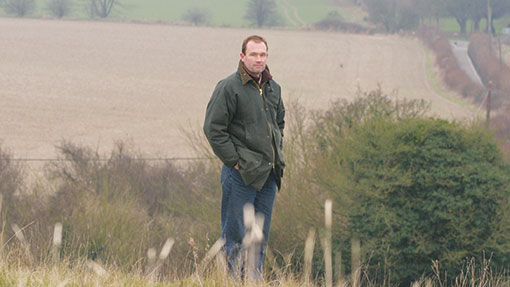Farmer Focus: Years of direct drilling has worked

I know you won’t believe this but a few years of direct drilling (and many more of very shallow tilling) have actually improved the drainage of my soils – a major bonus at the moment.
The wettest place is my heaviest patch obviously, not helped by my world-record attempt at a spraying off blackgrass as many times as possible. We’ve killed an awful lot, but of course there is no living cover crop to take up the moisture. In contrast are my chalky cover-cropped fields, which have allowed sheep grazing while still maintaining the soil structure. I do need to get the cover bigger, earlier, but in fact the winter has thus far been so warm that the plants seem to be re-sprouting as is some rabbit-grazed (now fenced) wheat.
Also rather damp is the solar park field on which building may start soon. The groundwork subcontractor seems unperturbed, explaining that he spends his life surveying bone-dry fields and building on soaking wet ones in the run up to “Mad March”, when everyone is rushing to get panels in before the feed-in tariffs change again.
I’ve just had my crop assurance inspection for another year and was asked to fill in a form from the HGCA regarding my mycotoxin risk assessment. It seems that a correctly filled-in risk assessment can actually be a better indicator of mycotoxin levels than the cheaper grain tests and so it could be well worth us getting it as accurate as possible, especially given that the alternative seems to be us paying for the tests every year.
I understand the European Commission voted in December to withdraw methiocarb at some yet to be determined date. I’ll be honest, I don’t use it, but the trend concerns me, as with more legislation possible around endocrine disruptors, candidates for substitution, water issues and bees, it is easy to see us losing a huge number of pesticide options.
One solution to using insecticides could be growing varieties bred using modern techniques, but last week the MEPs voted against allowing insect-resistant GM maize to be cultivated.
Andy Barr farms 630ha on a mixed family farm in Kent, including 430ha mainly of winter wheat, oilseed rape and spring barley. The rest is in an OELS scheme and grazing for 500 Romney ewes and 40 Sussex cattle.
Read more from Andy Barr
Read more from our other arable farmer focus writers

